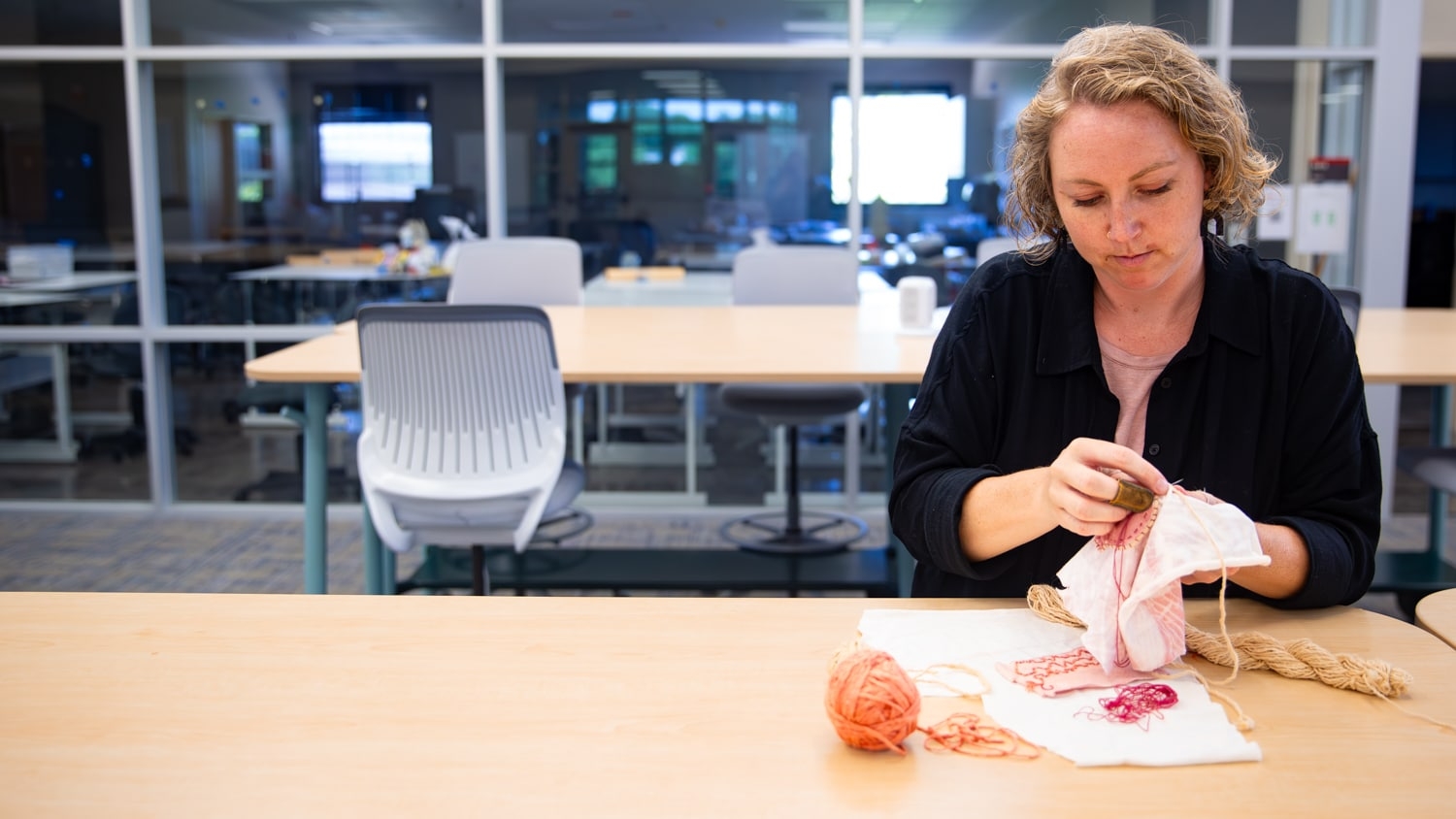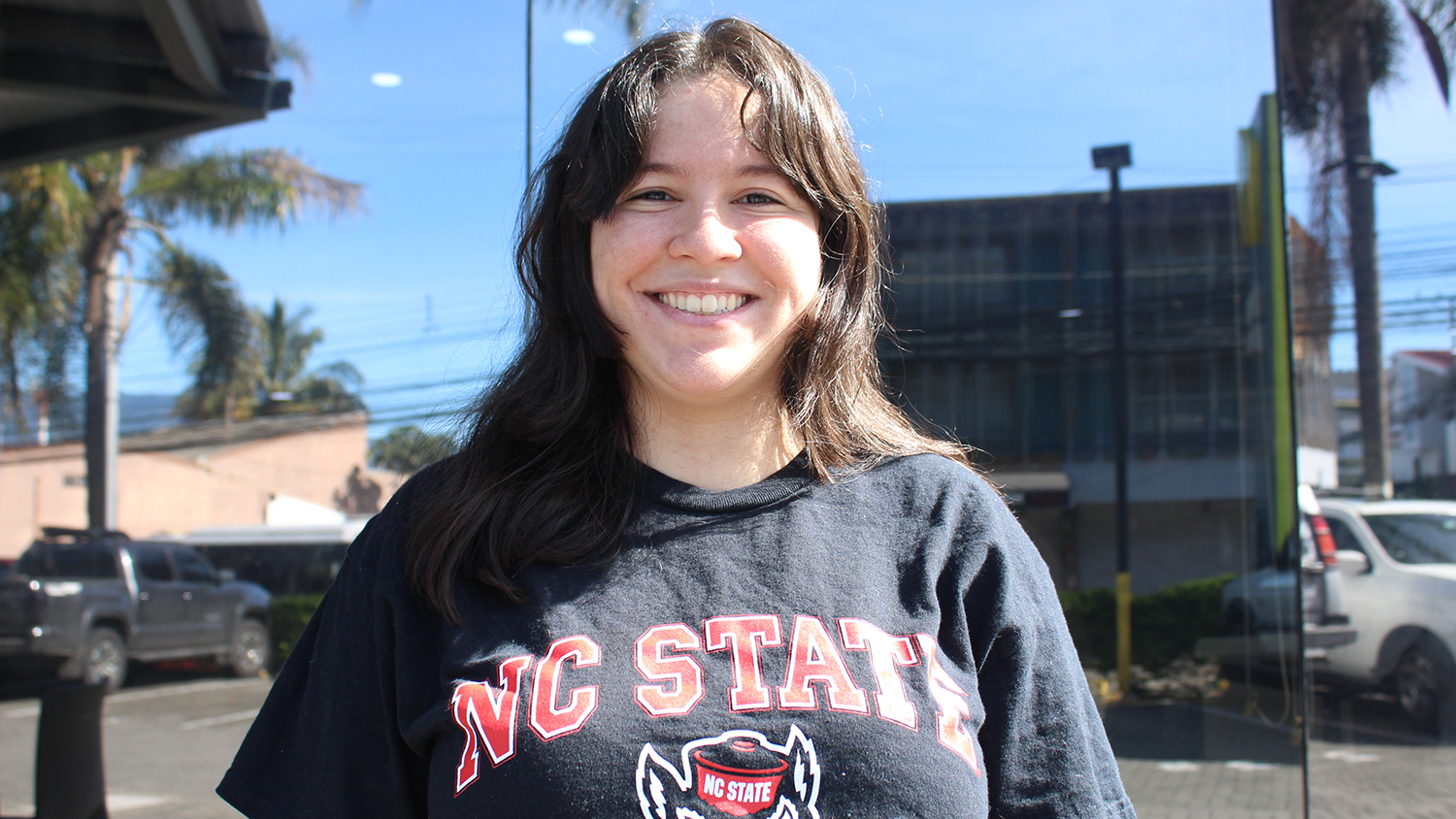Anna Stuffelbeam loves a creative challenge, so it’s no surprise that she placed second in Nextile’s Soy In Textile Design Challenge in March. A Master of Textiles student at Wilson College of Textiles, Stuffelbeam is interested in the technical aspect of fabric design. The challenge provides an opportunity for college students to use their creative skills to increase the sustainability of textiles.
In this inaugural challenge sponsored by U.S. Soy, students from textile programs at six colleges nationwide were invited by Nextile to create an original fabric from soy-based materials and an original design for its use. U.S. soybean farmers are able to produce more using fewer resources and have the lowest carbon footprint compared to other producers, providing a sustainable approach to agriculture.
Students were given a “mystery box” of various soy-based materials and had to incorporate at least three into their design. Four students were chosen from each college to compete among each other, and the winners of each college submitted their projects for the second round of the competition. As the runner up, Stuffelbeam won a $500 scholarship.
The Competition
“I’m inspired by nature, so I always start with drawing some motifs that are nature-based,” Stuffelbeam says. “I ended up drawing some plants that were based on the materials I was using, so some soy leaves and a pomegranate branch based on the natural plant dyes I used for the fabric as well.”
Stuffelbeam ended up creating a quilted foliage coat, using the soy elements french terry, top roving and silk thread. She used the french terry fabric as the base, dyed the fabric with natural madder root and hand-stitched it with decorative couching. The yarn for the couching was hand-spun from the soy top sliver. She used the soy silk yarn to stitch the appliqué and couching details.

“The biggest challenge was that I wanted to incorporate more of the materials they gave us that were different–not only the fiber based materials, like the wax or the pigments,” Stuffelbeam says. “The three week time-frame made it challenging to experiment to the full extent of what was possible with the materials.”
Despite the time constraint, Stuffelbeam enjoyed trying new techniques, like the couching and appliqué.
“Anna is so innovative in the way that she took this box of unusual materials and made something beautiful out of it,” Assistant Professor Kate Nartker says. “She hand-embroidered fabric swatches and then texture mapped them onto products. She did that portion really well–enabling the judges to envision her designs on a final application.”
Key Takeaways
Nartker worked with other textile design faculty to select a small group of students for the competition. She served as the faculty liaison between the students and Nextile, handing out the mystery boxes of materials and offering support along the way. She thinks that design competitions like this one play an important role in preparing students for industry opportunities.
“You’re in a position where you have to clearly articulate what it is you designed, who are you designing for and your vision and process,” Nartker says.
Stuffelbeam says that this competition pushed her to use materials that she wouldn’t have used otherwise and apply her skills in a way that worked with those materials. It helped prepare her for future jobs in an industry where she won’t always get to work with materials she is comfortable with.
“I think it was a good experience getting outside of my comfort zone and actually applying my design skills to whatever materials I’m given. Whatever the challenge is, I can work within that,” Stuffelbeam says.
This post was originally published in Wilson College of Textiles News.
- Categories:



